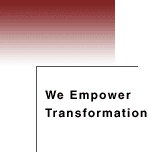
|
||||||||||||||||||||||||||||||
|
|
||||||||||||||||||||||||||||||
 | ||||||||||||||||||||||||||||||
|
The Post-Acquisition Due Diligence |
||
(A Description) The Traditional Due Diligence Though no one would attempt to acquire a company without a due diligence, it has been well known (and for many years) that fully two thirds of all acquisitions/mergers are disappointing - or worse. In these disappointments, there is a temptation to blame the due diligence - either the process used or the professionalism of the people doing it. But almost never is that the problem. The areas that are looked at in a due diligence are set by custom and tradition and these "due diligence" factors account for no more than 20% of the long term performance of a company . Furthermore, looking deeper or looking elsewhere in the company is discouraged. Almost always, the problem of disappointing acquisition/merger ROIs lies outside the factors that even the most careful Due Diligence can address. It lies within the Operating Dynamic© of the acquired company. The Operating Dynamic© Until recently, the Operating Dynamic was considered to be impenetrable, obscure, and non-quantifiable. It was also thought that there was nothing much anyone could do to change it; an investor could only appoint managers and hope and wait. However that is no longer true. There is now a dependable, predictable, understandable, easy-to-use technology for identifying the Operating Dynamic, quantifying it, and predicting the impact its various components will have on the trajectory of the company. The same technology can be used for changing it, where that is needed. It has been battle tested and proven on the bottom lines of companies for the last twenty years. The process might justifiably be called a Due Diligence - Phase II. But, because tradition and custom seldom permit its use before an acquisition, and because it can be used at the discretion of the investor after the purchase, we call it The Post-Acquisition Due Diligence © - PADD. (For reasons that will become clear later, it can also be called The Corporate Renewal Process © .) Objectives of the Post-Acquisition Due Diligence
The Corporate Renewal Process (or PADD) consists of:
The surveys are specifically designed to be responded to by management - from the CEO to the lowest level supervisors - those who are most responsible for the Operating Dynamic of the company as it currently is; those who will have to spear-head the changes that may be needed. The surveys are anonymous, within management team. They are comprehensive, yet take only twenty to forty minutes (depending on size) to respond to. They address at least a hundred factors of the Operating Dynamic of the company. (See Below) They are web based so that they can be accessed from anywhere. The "questions" are phrased as statements so that responses present themselves to the mind almost automatically without having to be agonized over. And they can handle textual commentary. These surveys are designed to show results for the overall company, and also unit by unit within the company. They can accommodate companies ranging in size from small to Fortune 100 conglomerates. The debrief/exploration session is where the major benefits of the Post Acquisition Due-Diligence are achieved - not so much from reading the results of the survey, but in the actual exploration and explanation of the results by the senior management team. It is only by this in-depth discussion and analysis by the people most responsible for the current situation that true understanding and acceptance can happen. Likewise it is only in this fashion that true management commitment to change can be created in so short a time. The debrief session takes place in the presence of, and with the participation of, the investor. However, the leader of the process is the CEO - sometimes the CEO + the investor. The session is facilitated by one, sometimes two, of our senior business diagnosticians. Detailed descriptions of the process used for this can be found in the articles at the Publications page of our web. Timing Once complete, it takes as little as two days to analyze and evaluate. It should be noted that this is done, not by a computer program, but personally by the senior diagnosticians of our company who will lead/catalyze the feedback sessions. Depending on size and complexity of survey, and the level of pathology found, the debrief/feedback session takes from as little as a few hours to two days. Costs For information on how the PADD might work for your acquisition, contact us at info@ManagementConsultants.com or 847-599-9960. A recently published article describing the process from start to finish, is available at http://www.managementconsultants.com/content.cfm?contentalias=postacquisitionduedil. list of the factors comprising the Operating Dynamic© can be obtained without obligation by requesting same at info@ManagementConsultants.com. |
||
� Copyright, Fitzgerald Associates, www.managementconsultants.com
All rights reserved. Revised: November 19, 2003